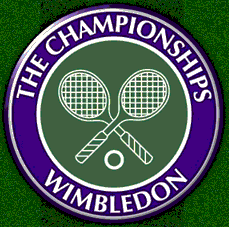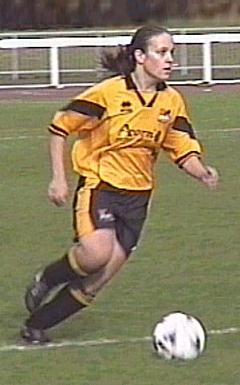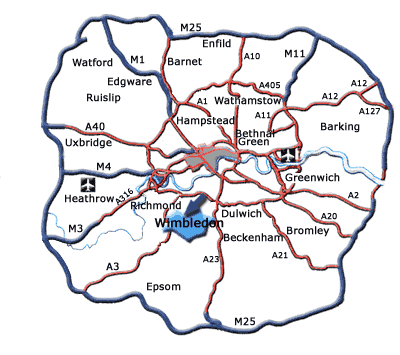IGK 2004 : Project Proposal
Towards an Automated Mixed-Media Answer Summary System
A Next-Generation Question Answering System
| Proposer | : Tiphaine Dalmas (ICCS) |
| Other interested students |
: Jochen Leidner (ICCS)
Dan Shen
Sebastian Riedel
|
| Suggested Lecturers/Guests | : Regina Barzilay (MIT)
Johan Bos (ICCS) |
| Time constraints | : NONE |
Links:
- Wee/QAAM man page
- NEW!! Slides (Project Presentation)
- Directory Sample here
Runs: (local access only)
- run 1
Description
In work to date on Question Answering, I have shown that even
simple 'factoid' questions often have more than one answer. As part
of this work, I have built a small web-based QA system called
Wee, which organises the result of queries sent to a search engine
and provides answers such as those shown in Table 1, in response
to the question "What is Wimbledon?".
However, while such answers are more informative than a list of
documents, they are flat structures and the connection between their
members is still not clear: Are answers alternatives or aggregations
or a mix of both? (In Table 1, answers 2 and 5 are clearly related
whereas 1 is a different club, 3 and 4 provide more general
information) .
Our proposal is to set up a QA renderer that would make explicit the
underlying relations between answers for a better and faster user
interpretation. A QA renderer should be different from existing IR
renderers [Honkela:1997:phd, Cugini:1996:cikm], which are mainly topic maps. QA
is more accurate and requires an answer organisation based on word
senses or referents rather than topics.
The proposed project involves the development of a mixed-media
answer summary system. The most salient senses of the answer will be
presented with a short summary, a relevant image of the answer entity
or its context, a set of links to other relevant pictures and a set of
links providing references for the answer. A possible example of such
a rendering is given in Figure 1.
Summaries will organize information in a more compact and
structured way than a simple list of sentences and prevent the user
from "jumping" to one line to the other to check if the answers are
actually the same answers or not. Pictures will provide a straight
understanding of the textual answer either by a direct visualisation
or by a new form of context. Links will redirect the user to more
information.
This project would be benefit of an existing framework consisting in a
web QA system (Wee) and a post-processor called QAAM.
QAAM (for QA Answer Model, [Dalmas:2004:cluk])
fuses and organizes information into a model before passing it on to a
renderer. This framework distinguishes between data and rendering,
making the QA process compliant with the Model-View-Control design
pattern [Krasner:1988] that has proved to be a
successful engineering methodology to implement user interfaces.
QAAM produces a graph of answers currently not exploited by the list
rendering. The objective of this project is to implement a mixed-media
renderer for QAAM (This project does NOT consist in finding
answers).
|
Figure 1: Answer Rendering
WIMBLEDON
|
Implementation
We will use existing web answers found by Wee to a subset of TREC 10 questions. Given the timeline,
we will focus on two or three specific question types only (see data
set below).
We propose to implement a renderer based on three sub-components:
- a summarizer that would pick up and filter sentences related to one
answer sense (provided by QAAM) and organize them. Summarization will
help removing redundant answers and organize together answers
aggregated by QAAM.
- an image filter using Google images to retrieve relevant
pictures. The query will be based on information provided by QAAM
(question words and keywords defining an answer cluster). Relevant
pictures will have to be filtered using heuristics (URL, image
name).
- a presentation mode selection module dependent on question type
Challenges
This project is meant to be a proof of concept. A fully automated QA
renderer would be a step towards "next-generation" QA systems as
described by [Burger:2002] and open the door to new
research such as:
- how to evaluate complex answers
- how to evaluate generated answers
- how to evaluate multimedia answers
It would be a direct competitor to the MIT START system [START], which provides mixed-media but based on
partial human annotation and filtering.
Data set
Question types:
location (58 questions)
Where is Perth?
What is the capital of Mongolia?
definition (108 questions)
What is nicotine?
What are invertebrates?
famous_for (3 questions)
Who was Galileo?
Who is Duke Ellington?
We will use the top 10 sentences provided by Wee+QAAM to 169
questions. 69 questions will be used for training. The rest will be
used to try out the renderer and analyse the performance.
Answers to be used (correct/incorrect)
Percentage of questions having a correct answer in the top n answers.
| 10st answers | : 100% |
| 5st answers | : 93.5% |
| 1st answer | : 66.3% |
Number of correct answers per question (multiple answers)
Read first row as: 32 questions have 2 correct answers in the top 10 results
| #questions | #correct_answers |
| 32 | 2 |
| 32 | 1 |
| 31 | 3 |
| 20 | 6 |
| 20 | 4 |
| 14 | 5 |
| 7 | 8 |
| 7 | 7 |
| 5 | 9 |
| 1 | 10 |
References
The START System (MIT)
START page: http://www.ai.mit.edu/projects/infolab/
Publications: http://www.ai.mit.edu/projects/infolab/publications/
Rendering
NIRVE:
http://zing.ncsl.nist.gov/~cugini/uicd/nirve-home.html
[Cugini:1996:cikm] J. Cugini and C. Piatko and S. Laskowski, Interactive 3D Visualization for Document Retrieval, Workshop on New Paradigms in Information Visualization and Man
ipulation , ACM Conference on Information and Knowledge Management, 1996
Self-Organization Maps for IR
WEBSOM: http://websom.hut.fi/websom/
[Honkela:1997:phd] Timo Honkela, Self-Organizing Maps in Natural Language Processing, Ph.D., Helsinki University of Technology, 1997
[Andree:2000] Andree, Elisabeth: The Generation of Multimedia Documents, in: R.
Dale, H. Moisl and H. Somers: A Handbook of Natural Language Processing:
Techniques and Applications for the Processing of Language as Text,
Marcel Dekker Inc., 305-327, 2000
Model-View-Controller design pattern
[Krasner:1988] G. Krasner and S. Pope, A Cookbook for Using the Model-View-Controller User Interface Paradigm in Smalltalk-80, Journal of Object-Oriented Programming (JOOP), 1988
Multi-Document summarization
[Barzilay:1999:acl] R. Barzilay and K. R. McKeown and M. Elhadad, Information Fusion in the Context of Multi-Document Summarization, 37th Annual Meeting of the Association for Computational Linguistics, 550-557, 1999
Next generation question answering systems
[Burger:2002] J. Burger and C. Cardie and V.
Chaudhri and R. Gaizauskas and S. Harabagiu and D. Israel and C.
Jacquemin and C. Lin and S. Maiorano and G. Miller and D. Moldovan and
B. Ogden and J. Prager and E. Riloff and A. Singhal and R. Shrihari and
T. Strzalkowski and E. Voorhees and R. Weishedel, Issues, Tasks and Program Structures to Roadmap Research in Question and Answering, NIST, 2002.
Answer comparison and information fusion for QA
[Dalmas:2004:cluk] T. Dalmas and B. Webber, Answer Comparison: Analysis of Relationships between Answers to `Where'-Questions, 7th Computational Linguistics UK (CLUK), 2004
Tiphaine Dalmas
Last modified: Sun Aug 29 22:15:38 BST 2004


